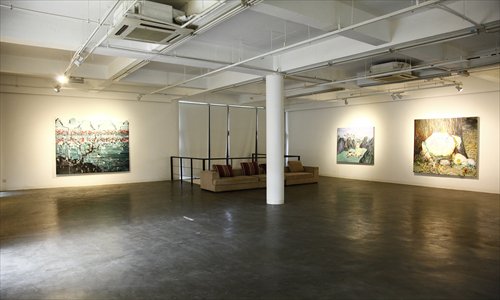The art of the deal
Yibo Gallery located in Red Town (570 Huaihai Road West, a major creative art cluster in Shanghai) is commonly referred to as the jianghu gallery by artists and art lovers for whom it has become an indispensable meeting place since it was first established in 1998. And Zhao Jianping, the owner of the gallery, is universally known in the art community as gemen'er, or "brother," for his role in bringing these artists and their admirers together.
As a gallery that focuses on Chinese contemporary art, Yibo is also regarded as one of the "elder brothers" among Shanghai's galleries. Since it was opened, it has built strong relationships with several top Chinese artists such as Fang Lijun, Yue Minjun, Liu Xiaodong and Zhang Xiaogang.
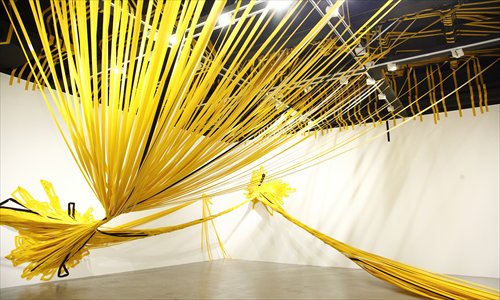
High prices
Reflecting the skyrocketing prices of sales of Chinese contemporary art, Shanghai has a seemingly robust landscape and history of art galleries that stretches back two decades.
Today, there are more than 2,000 galleries in the city, most privately owned. However, it's also true that it is the older galleries in the city that have the better chances of succeeding compared to more recently-opened ventures.
Besides Yibo, other long-established galleries include ShanghArt Gallery (opened in 1996), Hwas Gallery (1997), Aura Gallery (2000), and Eyelevel Art (2001).
"Well-developed relationships and personal friendships with artists is the main philosophy behind the running of my gallery," Zhao told the Global Times, "It is a really demanding job that needs a lot of time and energy and good interpersonal skills." Before opening the gallery Zhao was the president of a branch of a local bank with little knowledge of the art world.
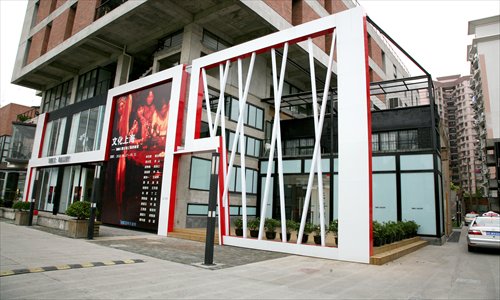
Unlike Yibo and many other galleries which are largely run by locals, ShanghArt Gallery was started by the Swiss-born Lorenz Helbling who came to the city after graduating in art from the University of Zurich in the 1990s. This is widely regarded as the first gallery in Shanghai to focus on contemporary Chinese artists.
Zhao and Helbling are similar in that they are both financially astute; they hold regular influential exhibitions that seek out and promote newly rising stars whose work is still affordable. They were both early champions of such famous artists as Zeng Fanzhi, Yu Youhan, Zhang Enli and Ding Yi.
ShanghArt has an international client base and regularly participates in top international art fairs, including Art Basel in Switzerland, ARCOmadrid in Spain and Artissima in Italy. Yibo, however, seldom ventures outside of the Asian art market. This tends to be a recurring difference between galleries owned by foreigners and those owned by locals. "Another obstacle to taking part in these international fairs is the expense of traveling there and of signing up to appear," said Zhao.
Zhao candidly admitted that although his gallery is still open and hasn't gone bankrupt, it is still far from being what he would term a "success." "The truth is that galleries in China struggle to attain a position of financial security and respect in the art world, which many international galleries enjoy," said Zhao.
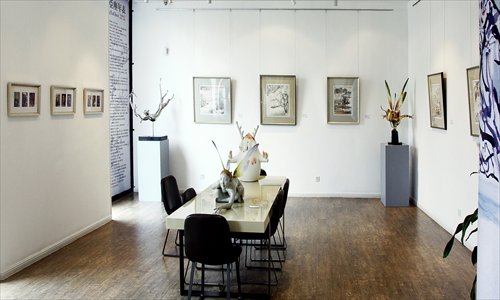
Urgent priority
Zheng Peiguang, who owns the company that operates Red Town, has been involved in the local art and culture industry for many years. "For most galleries in Shanghai, especially new ones, simply surviving is their most urgent priority. This is before they can even think about hosting exhibitions, participating in art fairs or promoting young artists. The problem is that few galleries in China have charitable or business foundations behind them on which they can rely for financial support," he told the Global Times.
In Zhao's view, art galleries should be the other major channel for the art market and for daily exchanges in the industry, besides art fairs and auctions. "But, as yet in China, galleries struggle to fulfill this role," he said.
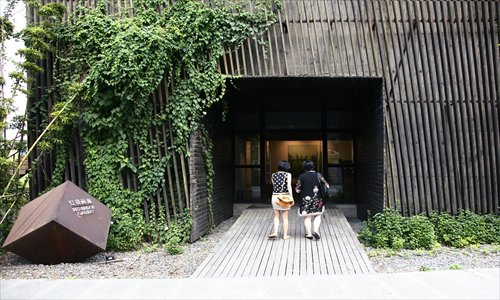
Zhao added that there is also the problem of works being bought and sold privately to avoid paying tax on such financial transactions. When a buyer makes a purchase from a gallery, however, such a public sale means paying tax is unavoidable.
Zheng said: "The tax that the government levies on artworks is very high - it is 17 percent of the total price." He believes this is a challenging time for the gallery industry in China, and that owners and curators must actively find new ways to survive and develop.
One recent development, however, has heartened Zhao: the setting up of the first "gallery union" in Shanghai. "This step has actually been discussed for the past 10 years by gallery insiders," said Zhao.
Zhao and Zheng are two of the organizers behind this non-governmental union which represents six galleries in Shanghai, all in Red Town: Yibo Gallery, Hwas Gallery, Eyelevel Art, Shengling Art Gallery, Author Gallery and Red Bridge Gallery.
"There are two benefits of the union for these galleries: one is cost sharing, and the other is the ability to work together and to expand the influence of our respective galleries," Zhao said.
